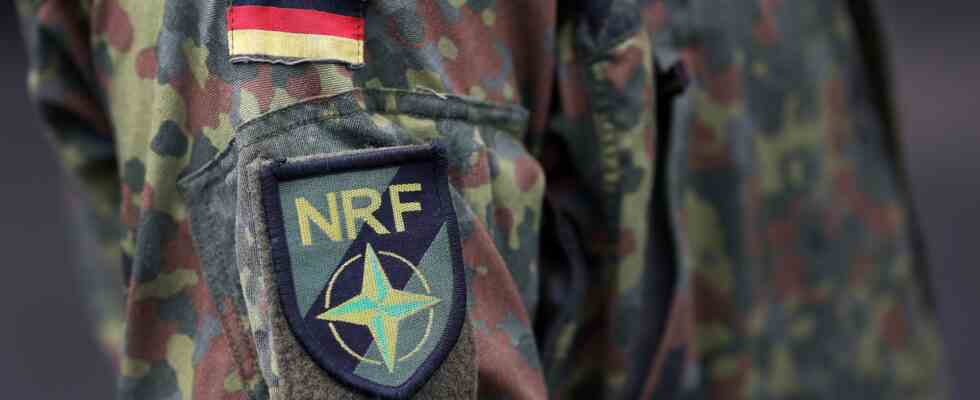analysis
Status: 07.01.2023 03:57
The Bundeswehr has been a constant topic since the Russian attack on Ukraine. Long before the war began, it was clear that Germany would lead the NATO Rapid Reaction Force (VJTF) in 2023. A major feat for the Bundeswehr.
For a whole year, the Bundeswehr has been the tip of the “spearhead” for NATO. Because that’s what the alliance’s rapid reaction force is called colloquially. This means that around 8,000 German soldiers are literally sitting on their packed marching bags and are ready to be transferred to a possible trouble spot within a maximum of 72 hours.
For the Bundeswehr, this is an honor and obligation, but above all a tour de force. After all, the Germans have to provide skills in all conceivable areas, from tanks to artillery to helicopters, to NBC defense and paramedics. And that at a time when the troops are being called upon to do more work beyond the spearhead by NATO because of the threat posed by Russia.
In terms of equipment, the 100 billion package that has been decided is still too young to really make a difference. So it didn’t even take the loss of 18 “Puma” armored personnel carriers to reveal the problems.
Operational readiness only “yellow”
In order to make the operational readiness of the Bundeswehr a little clearer to the Bundestag, the Ministry of Defense came up with a “traffic light system” for a confidential paper to the parliamentarians. In this report from mid-December, which dem ARD Capital Studio is available, the traffic light for the NATO spearhead is only “yellow”. In plain language, this means that the operational readiness is limited. Which is partly due to deficiencies in communication technology.
Only limited anti-aircraft
Another finding by Inspector General Eberhard Zorn is even more worrying for the intervention force: In the paper, he points to the lack of options for combating drones, airplanes and helicopters, i.e. to a deficit in air defense: “Since these are not available in good time the protection of our own forces against the threat in the area close to the ground can only be guaranteed to a very limited extent within the framework of the anti-aircraft defense of all troops,” Zorn writes on page 20. An unmistakable indication of the balancing act the NATO fire-fighting unit is forcing the Bundeswehr to perform.
NATO boss also sees “deficits”
But what follows from all this? The fact that the Germans failed in 18 planned “Puma” armored personnel carriers shortly before they took over the leadership of the spearheads certainly did nothing to improve the Bundeswehr’s reputation within NATO. But because the “pumas” could be quickly replaced by “marders”, the excitement was contained.
At the turn of the year, NATO Secretary General Jens Stoltenberg said he had no doubt that Germany would be an “excellent leadership nation”. The concerns in Brussels are probably of a more general nature: As far as the equipment shortages in the Bundeswehr are concerned, Stoltenberg found: There are certainly “gaps and deficits”.
Next effort by 2025 at the latest
It is now a matter of filling these gaps. Because the tasks facing Germany are not getting any smaller. For example, the federal government has promised NATO a fully equipped division for 2025. It is quite possible that the core of this troop should be formed by the soldiers now assigned to the spearhead. From today’s perspective, however, it is anything but certain whether this will succeed with the full equipment. The spearhead year for the Bundeswehr is also a kind of test year, a NATO MOT for areas where improvements need to be made in the future.

